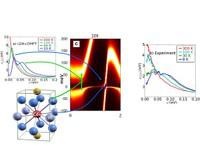-

- Kotliar
Rather than haphazardly looking for and discovering materials and exploiting their properties, materials science's aim is to understand materials so that new materials with desired properties can be created. The development of quantum mechanics ideas and density functional theory based computational methods, has been extremely successful in this regard. In the twentieth century, a “standard model” of solids has been established, and it provides qualitative and quantitative guidance in the field of material research. Correlated electron systems are outliers whose behavior do not fit within the standard model. They display remarkable phenomena ranging from metal to insulator transitions and high temperature superconductivity to anomalous thermoelectricity and volume collapses. They continue to surprise us with their exceptional physical properties and the perspectives for new potential applications.
The discovery of interesting strongly correlated compounds so far has been the result of serendipity and the application of the Edisonian approach, the most recent example provided by iron arsenide superconductors. From a theoretical perspective correlated electron systems are close to a localization-delocalization boundary. In this regime neither band theory (itinerant picture) nor atomic physics (localized picture) describes the physical properties of the materials posing one of the most difficult non-perturbative problems in physics.
In the past two decades we achieved significant progress in the description of the electronic structure of correlated materials through the development
of the dynamical mean field theory (DMFT) approach. In this lecture we will give an elementary introduction to the field of strongly correlated electron systems and to the ideas of Dynamical Mean Field Theory (DMFT). We will illustrate the methodology with some examples drawn from f and d electron systems. We will conclude with an outlook of the challenges ahead and the prospective for theory assisted material design.

